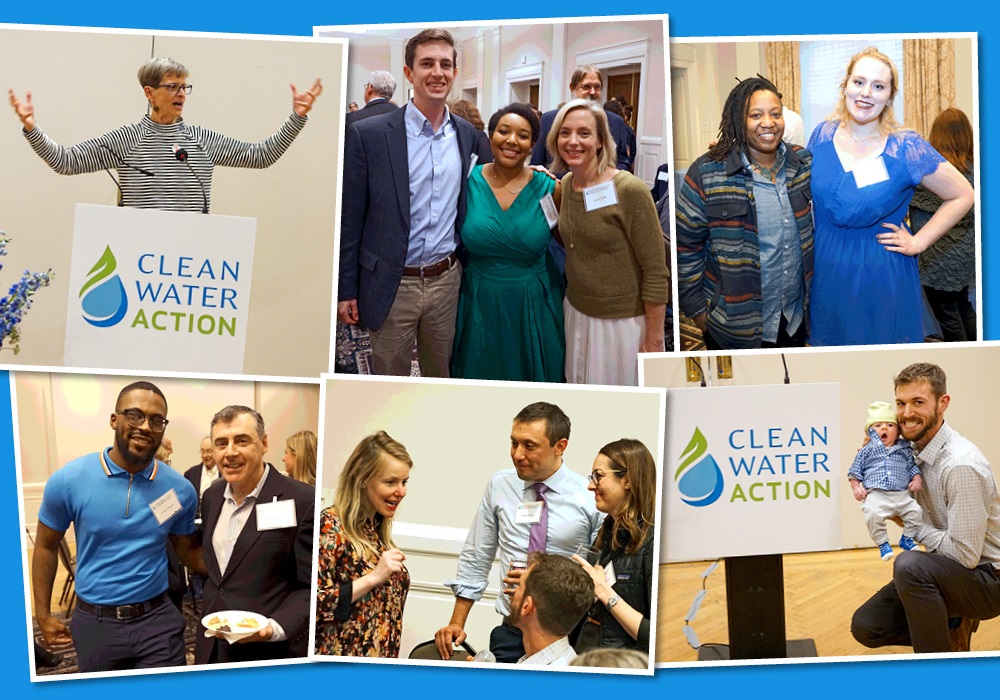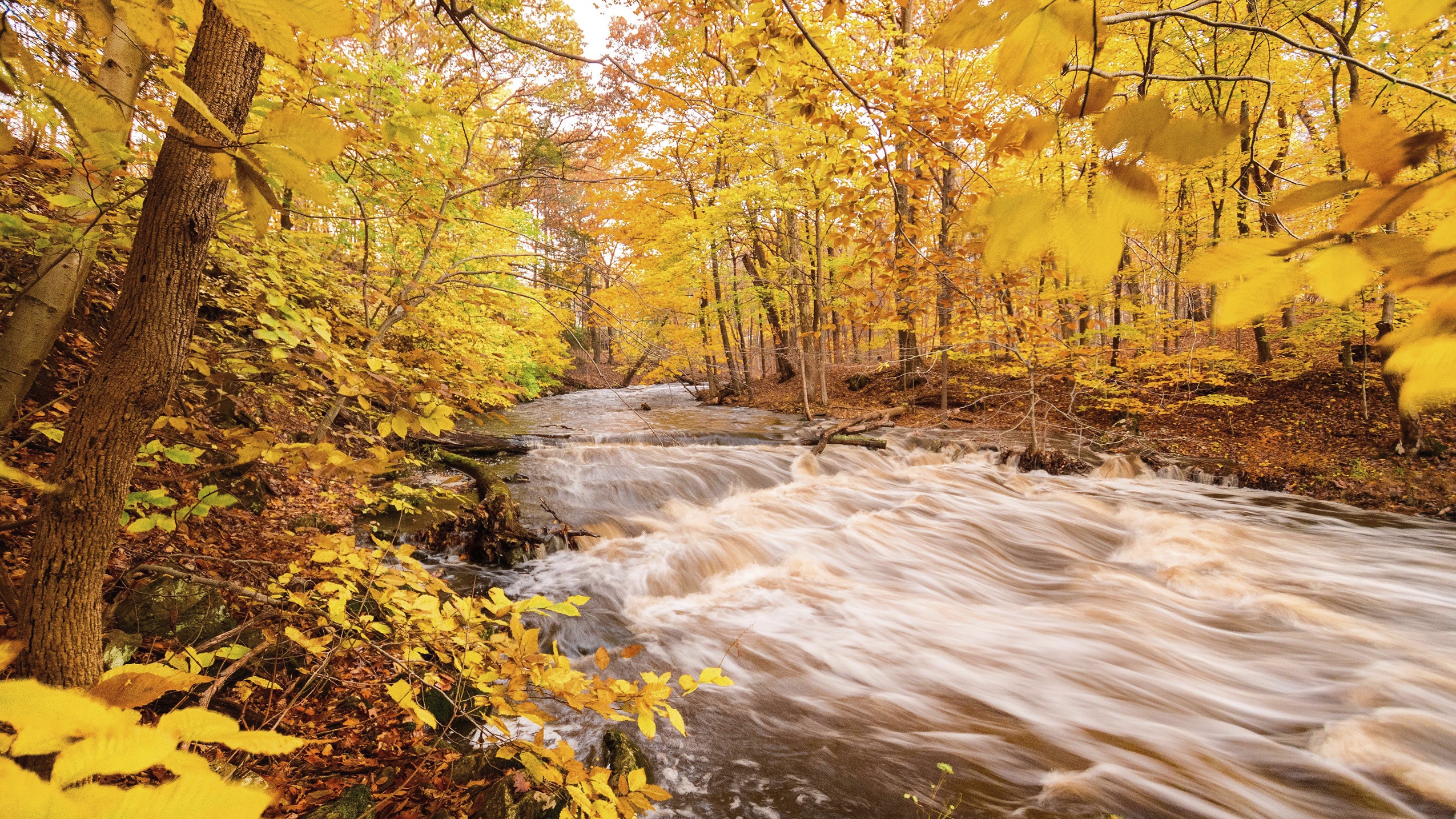In This Edition
- Tracking Congress
- The Dirty Water Agenda in Full Force
- Another Rollback
- Shining a Light in Corruption at DOI
- Addressing the Forever Chemical
- Busting Myths about the Clean Water Rule
- Use These Tools to Protect Clean Water
- Our Annual Event
- Download the PDF
Clean Water Action is Tracking the 116th Congress
After eight years of leadership in the House of Representatives that put corporate special interests before our health and water, voters elected clean water leaders throughout the country in 2018. The House is now led by a coalition of leaders who have prioritized our water, health, and communities. They got to work right away and have already passed several pro-environment bills.
Though the Trump administration and Senate Republicans continue to pursue a Dirty Water Agenda, the leadership in the U.S. House has offered up a more hopeful alternative, passing measures to restore our democracy, take on climate change, and fully fund vital federal programs and agencies. A few of the highlights of bills that have passed the House:
— H.R. 1, the “For the People Act,” would strengthen voting rights, reform campaign finance laws, and improve government ethics rules.
— H.R. 9, the “Climate Action Now Act” would ensure the U.S. remains in the Paris Climate Accord, and force the executive branch to come up with a plan for meeting the goals set in the Accord.
— Spending bills that reject President Trump’s proposed budget cuts and fully fund the Environmental Protection Agency and other programs that protect our air and water, and advance clean energy.
— Several bills and amendments to block offshore oil and Arctic oil and gas drilling.
Clean Water Action is tracking the votes from the 116th Congress that impact our water, health, climate, and communities. These, and upcoming votes, will inform the organization’s 2020 Congressional scorecard which will be released in summer 2020, ahead of the general election.
Make sure to visit the tracker periodically. Votes will be updated as they happen and the page will soon have information about how your Senators and Representative voted.
Also, make sure to check out the scorecard for the last Congress (115th) here.
Trump’s Dirty Water Agenda, in full force

One of President Trump’s first executive orders, in early 2017, directed the Environmental Protection Agency to repeal the 2015 Clean Water Rule. In September 2019, EPA finally fulfilled that mission. On September 12th, at the headquarters of a corporate lobbying organization, Administrator Andrew Wheeler finalized the agency’s repeal of Clean Water Act protections for streams, wetlands, and the drinking water sources for more than 1 in 3 Americans. Now that the Clean Water Rule has been repealed, landowners, EPA, and the Army Corps of Engineers will have to rely on an expensive, time-consuming case-by-case process to determine if a water body is covered by the Clean Water Act, leading to cumbersome permitting decisions and difficulty enforcing potential violations. Clean Water Action and its allies are planning their next steps in the campaign to stop this rollback.
Finalizing the repeal of the Clean Water Rule was only one part of the Trump administration’s attacks on clean water this year.
In April, EPA declared that it would no longer regulate pollution that makes its way to surface water through groundwater.
In August, EPA announced that it would do-nothing to protect water from leaks and spills of hazardous chemicals and other substances.
In September, EPA officials tried to defend the agency’s attacks on clean water in front of Congress.
In September, Andrew Wheeler sent an unprecedented letter to California claiming that the state wasn’t living up to its obligations under the Clean Water Act because of pollution from homelessness.
As of press time, Clean Water Action and its allies were awaiting several additional attacks on the Clean Water Act including rolling back safeguards to protect rivers and lakes from toxic coal plant wastewater and a proposal to allow more partially-treated sewage to flow directly into waterbodies throughout the country.
Another Attack on Clean Water to Benefit Corporate Polluters
The U.S. Environmental Protection Agency (EPA), under the leadership of ex-coal lobbyist Andrew Wheeler, only seems to care about empowering states to protect local water resources when it benefits corporate polluters. Administrator Wheeler claims he repealed the Clean Water Rule to “restore the role of states and landowners in managing their land and water resources while at the same time promoting economic growth,” yet — hypocritically — he recently proposed to limit states’ and tribes’ ability to protect their own water resources under Section 401 of the Clean Water Act.
Section 401 is a vital provision in the Clean Water Act that authorizes states and tribes to review applications for federally-licensed projects to access potential impacts to water quality. Complex projects like pipelines, fossil fuel export terminals, and dams can harm water quality in many ways, including by filling in wetlands, damming rivers, and digging trenches through streams. After completing their review, a state or tribe can approve, reject, or request modifications to the terms of a project application in order to protect their own water resources.

The Trump administration can’t stand that a few states have recently rejected construction of pipelines and other dirty energy projects because of the irreversible damage these projects would have caused. In order to fast-track construction of more dirty energy projects, Trump’s EPA is now plotting to restrict states’ and tribes’ Clean Water Act authority in the following ways:
Limiting Review Time: Limits time states and tribes have to review a water quality certification request to a “reasonable” period of time, not to exceed one year. The clock would start once a request is made, not when an application is complete. Certain projects, such as for a dredge and fill permit, will be limited to six months. If a state or tribe fails to act upon a request within that time frame they lose their right to certify that project.
Shrinking Scope of Review: Strips states and tribes of their authority to consider the overall health and biological integrity of water bodies when reviewing a certification request. Instead, 401 certification decisions can only consider harm caused by discharges of pollution from a point source — not erosion, sedimentation, or low stream flow — all factors that can also impact water quality.
Giving Federal Government Final Word: Allows federal licensing/permitting agency the final say on whether a state’s or tribe’s decision to approve, reject, or set conditions on a permit is “reasonable” and “consistent with the scope” of the Clean Water Act. If the permitting agency does not agree with a state’s or tribe’s decision it can override it, placing the burden on the state or tribe to file a legal challenge to overturn the agency ruling, all while allowing the project to proceed.
Restricting how states and tribes review projects could invite industry to game the system by submitting minimal data and ignoring requests for any additional information. This will make it harder to protect water resources and safeguard communities from pollution.
Section 401 in action!
In September 2019, Minnesota rejected Enbridge’s application for a Section 401 Water Quality permit for Line 3, and a nearly 400-mile-long oil pipeline that would have put wetlands and streams throughout the state at risk. This decision shows the vital importance of this Clean Water Act provision. Read more here.
Shining a Spotlight on Conflicts of Interest at the Department of the Interior

David Bernhardt is the most conflicted Interior Secretary in history, with so many conflicts of interest that he had to carry around a list of his former clients to remember them. On Saturday, August 3rd, Bernhardt’s two-year recusal period from doing business with his former clients expired — meaning that DOI is officially open for corporate polluter business.
To mark the day and highlight how these conflicts of interest put our water and public lands at risk, Clean Water Action and Clean Water Fund gave out Crookie Monster ice cream at locations throughout Washington DC.
In September, Secretary Bernhardt officially renominated William Perry Pendley, an ardent advocate for the disposal and sell-off of public lands, to be acting director of the Bureau of Land Management, doubling down on his culture of corruption at the Department of the Interior by stacking the agency with swampy deputies. Pendley has spent his career working to sell out public lands to corporate polluters. He has a decades-long history as a leader in the land-seizure movement and will continue Secretary Bernhardt’s coordinated agenda to weaken the protections for public lands and national parks.
Clean Water Action and Clean Water Fund highlighted this outrageous decision outside of the headquarters of the Department of the Interior.
Getting PFAS, “the Forever Chemical,” Out of the Environment
Amidst increasing public concern over PFAS chemicals, and with new contaminated sites and water sources regularly identified across the country, numerous bills that would increase our knowledge about PFAS chemicals, accelerate clean-up, and control release into the environment have been introduced in the US Senate and the US House this year. As of press time in early October, a number of these policy solutions are part of the annual Defense Department spending bill for 2020 — the National Defense Authorization Act (NDAA). The Senate and the House have each passed a version of the spending bill with different PFAS-related provisions; those are now being considered by a conference committee of Senators and Representatives.
Congressional intervention is a critical part of the policy action needed to address the widespread presence of these troubling chemicals in the environment and their continued use in everyday products like food packaging, in foams used to fight fires, in industrial processes like chrome plating, and throughout the economy.
State actions creating momentum for change.

Many states are taking the lead in addressing PFAS chemicals. Clean Water teams are working to ban PFAS in food packaging and in firefighting foam. Some states are enacting their own policies to protect drinking water, to set clean-up levels for contaminated sites, and to discover where PFAS contamination is occurring and to find the cause. But state-by-state approaches are not enough to tackle this problem.The US Environmental Protection Agency’s (EPA) February 2019 PFAS Action Plan lays out an agenda for EPA activity and demonstrates the scope of PFAS chemicals problem. Despite the scope, EPA’s plan is not ambitious enough. Congressional action can accelerate and strengthen federal agency action. Congress can also make sure EPA and other agencies have the resources they need to do the job right. Some of the issues we have to address:
We don’t know enough about how PFAS chemicals are getting into the environment. The Defense Department spending bill (NDAA) under consideration now includes an amendment to add PFAS chemicals in the Toxic Release Inventory (TRI) list. This is one way we can learn more about how PFAS chemicals are getting into the environment.
We need to stop PFAS chemicals from getting into the environment. Congress should also require EPA to list PFAS chemicals under the CERCLA (Superfund) program and the Clean Water Act in order to accelerate clean up and to begin blocking discharges of the chemicals in water bodies.
We don’t need to use PFAS chemicals. The NDAA bill currently under consideration would phase out the military’s use of these chemicals in fire-fighting foam and in food packaging. Substitutes are available.
Busting Myths About the Clean Water Rule
Too many press stories about the repeal of the Clean Water Rule used talking points from corporate special interests and other industries who will benefit from fewer protections for streams and wetlands. Clean Water Action set out to correct some of the biggest myths. See the full list here.
Myth #1: The Clean Water Rule expanded the number of streams and wetlands that are protected by the Clean Water Act.
Fact #1: The Clean Water Rule only protects waters that were historically covered by the Clean Water Act, it did not expand the number of water resources under Clean Water Act jurisdiction. The Clean Water Rule just made it easier to determine which waters fall within Clean Water jurisdiction, ensuring those waters are protected.
The Clean Water Act has protected tributaries, streams, and wetlands since 1972 as these smaller water bodies are vital to the health of larger rivers, lakes, and bays. The law was never intended to only cover large bodies of water like Puget Sound, the Colorado River, or the Everglades. The reason is simple: pollution flows downstream, it won’t just be contained in small streams and wetlands. Pollution in smaller upstream waters will impact larger waters.
Myth #2: Small farmers are the biggest beneficiary of the repeal of the 2015 Rule.
Fact #1: Farmers and normal farming and ranching activities are already exempt from the Clean Water Act. The big winners of the repeal are real estate developers, the fossil fuel industry, and other industries who will benefit from being able to pave over streams or fill in wetlands without a permit.
Read the rest of the myths and facts here.
Use These Tools to Protect Clean Water!
Everyone needs a will. But 58% of Americans don’t have one — yet! Now, you can craft your own legal will and take care of the people and causes you care about most. Our will-writing tool is free to use and surprisingly easy. Help protect clean water for future generations. Get started here: freewill.com/cleanwater
Born before 1950? If you’re at least 70 ½, you can arrange to donate direct from your IRA to Clean Water Fund (up to $100,000/yr) and realize significant tax savings. Your gift supports a great cause that needs your help today (must be received and deposited before 12/31 to count for 2019). Get started here: cleanwater.org/ira
Protecting Our Water -- Clean Water Action's Annual Celebration
Clean Water Action is throwing a party, and everyone’s invited! The organization is hosting its Annual Celebration Protecting Our Water on Monday, October 28, 6:00 pm at the Carnegie Institution for Science in Washington DC.
The event is a celebration of the organization’s 40-year history in taking action to protect clean water. Clean Water allies and members are a critical aspect of this work, and are invited to join the festivities! The event includes:
Keynote speaker and New York Times bestselling author Seth M. Siegel. His talk will be one of his first public addresses (and the first in Washington, DC) following the publication of his new book Troubled Water: What’s Wrong with What We Drink. Books will be available for purchase at the event.
2nd Annual David Zwick Memorial Award will be given to Gary Steinberg, Clean Water Action’s former National Canvass Director, in recognition of Gary’s decades of work for social justice and environmental protection.
Local beer, wine and dinner fare. Guests can enjoy delicious food and drinks, while meeting Clean Water staff, alumni, and environmental NGO leaders.
Clean Water Action invites its allies and members to join in on the fun — come learn about the organization’s recent accomplishments and what’s in store for Clean Water in the future. Tickets are $85 for one and $150 for two. Get your tickets or become a sponsor at www.cleanwater.org/annualevent.


